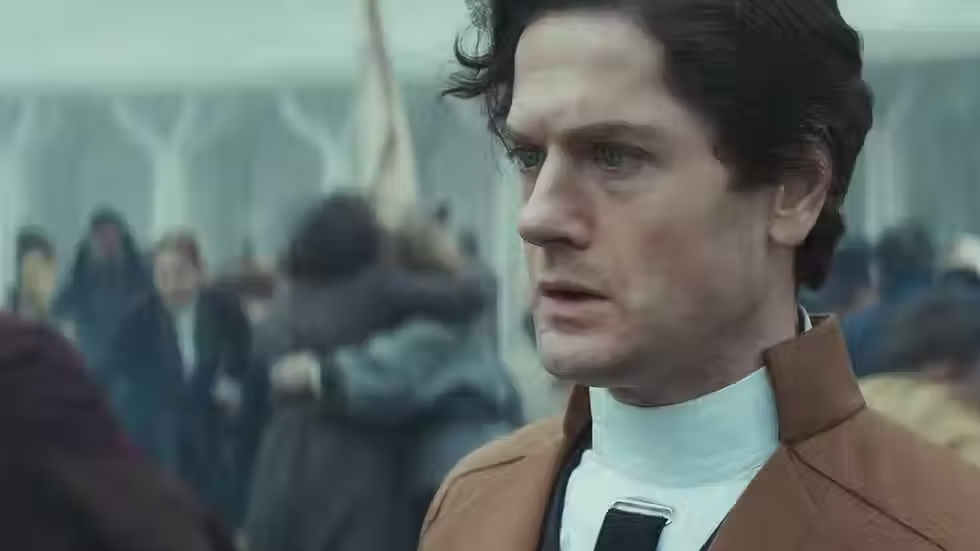Redefining Horror: The Blind Menace
- ogradyfilm
- Nov 27, 2018
- 3 min read

We all know the popular archetypes. The jock. The stoner. The virgin. Maybe a wheelchair-bound youth for some extra variety/pathos. Like machete swinging maniacs, self-aware splatter flicks such as Scream and the more recent Cabin in the Woods hack these tired clichés into gooey, steaming chunks. But before Halloween and Friday the 13th really codified the familiar conventions, Martin Scorsese described Taxi Driver as his spin on the horror genre. He referred not to visceral horror—the jump scares and gore gags associated with the then-emerging slasher movement—but to psychological horror—finding true terror in the very worst of human behavior.
I could squeeze plenty of films into this character-centric subgenre (A Clockwork Orange springs to mind), but few would embody its central thematic concerns as perfectly and elegantly as Kazuo Mori’s The Blind Menace (Japanese title: Shiranui Kengyo)—the most chilling journey through the pitch black landscape of a man’s soul ever committed to celluloid.

The soul belongs to blind masseur Suganoichi (played by Shintaro Katsu a full two years before the Zatoichi series catapulted him to superstardom), a man so willfully and unrepentantly evil that Richard III might find his company unpleasant. Driven by an insatiable hunger for wealth and power, he robs, rapes, blackmails, and murders his way to the top of the social ladder. Whatever he wants, he takes by force; whatever slips through his fingers, he destroys without remorse.
Like many of the more memorable movie “monsters” (Norman Bates, for instance), Suganoichi wears the skin of a man, making his dark deeds all the more shocking and terrifying. I even briefly found myself sympathizing with him; we first encounter him as a child, using his wits (and a well-aimed booger) to feed his penniless mother’s alcoholism. As the broken-down woman drowns her sorrows, she encourages him to escape poverty by any means necessary—no easy task for a sightless youth in feudal Japan. Thus, Suganoichi becomes an outcast and an underdog, struggling to survive in an oppressive, corrupt society.
But, like Alex DeLarge, this “underdog” gradually sheds the layers of his humanity. Any pretense of buried decency evaporates the moment he enters the home of Lady Namie Imai. She desperately needs 50 ryo to settle her brother’s debts and save his clan—a delicate situation she hopes to hide from her honorable husband. Suganoichi lends her the money out of his own pocket—but his generosity comes at a steep price.

The brutal rape scene that ensues borrows much of its visual language from German Expressionism and Universal’s classic monster movies: disorienting camerawork, creeping shadows, framing that leaves the worst of the violence to the viewer’s imagination. The patter of rain drowns out the lady’s sobs.
When the husband arrives the next morning, the blind scoundrel makes a great show of thanking Namie for her hospitality… and then asks her to return the money she kindly agreed to hold for him. Unable to protest in front of her husband without revealing her deception, she reluctantly complies. And this is just the first crack in Suganoichi’s façade, a mere glimpse of the evil hidden behind his charismatic grin.
Any film that contains such horrific characters and imagery deserves to be called a horror film. “Genre” has evolved into some sort of exclusive club; if a picture fails to follow a particular dress code, the bouncer kicks it to the curb. I think the time has come to lift the velvet rope and adopt a more inclusive system—one defined by tone/mood/atmosphere rather than a Scream-style checklist. Taxi Driver is a horror movie. A Clockwork Orange is a horror movie.
The Blind Menace is a horror movie.
[Originally written April 26, 2012.]





Comments